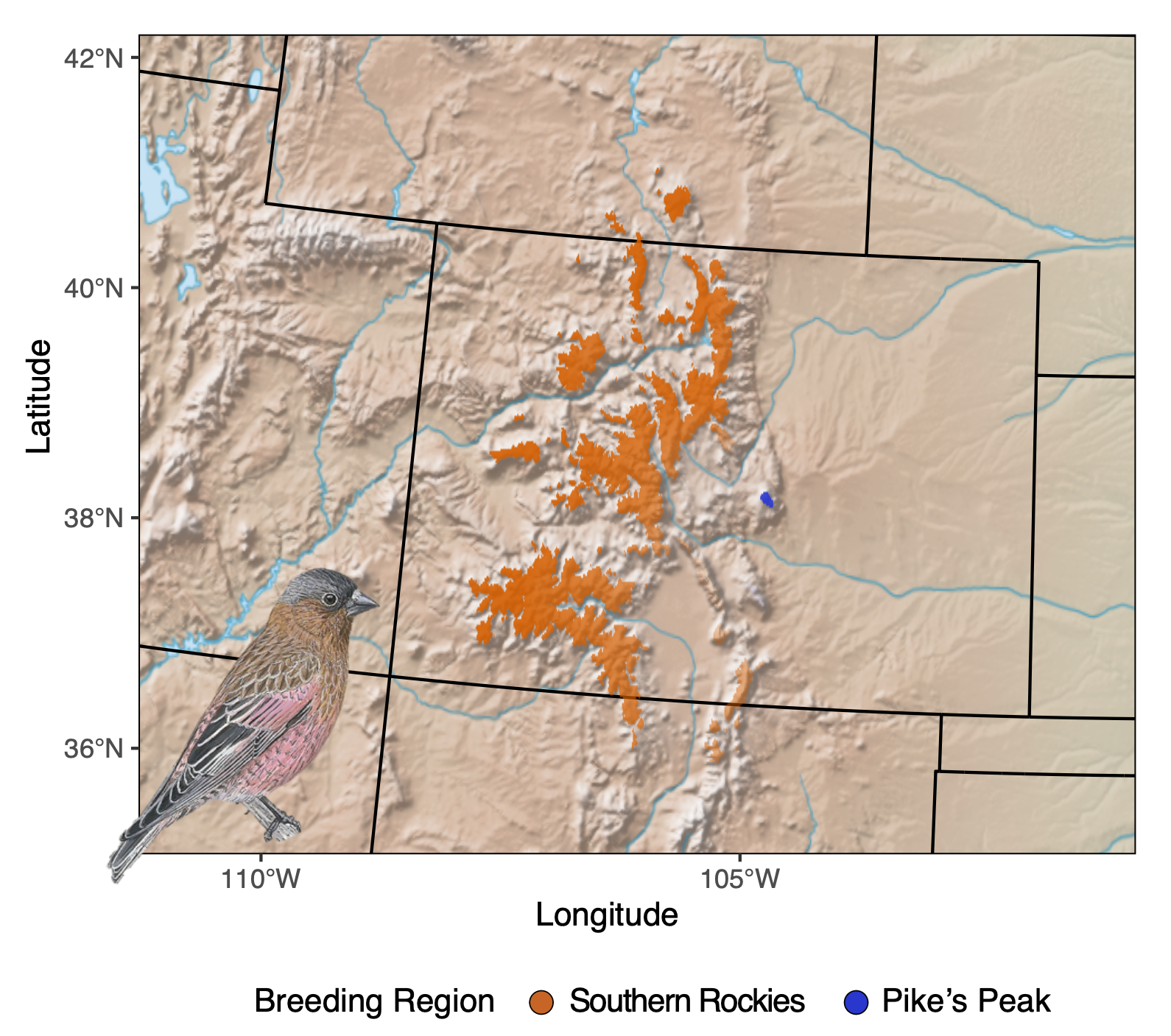Brown-capped Rosy-Finch
The Brown-capped Rosy-Finch (Leucosticte australis), is an alpine specialist species endemic to the Southern Rocky Mountains (Wyoming, Colorado and New Mexico) and part of the broader Rosy-Finch species complex notable for specializations to alpine sky islands and arctic tundra. While climate change broadly results in species shifting distributions poleward and upward in elevation, the Brown-capped Rosy-Finch has limited potential for poleward range shift given the isolation of the Southern Rocky Mountains from other high-elevation mountain ranges and the presence of congeneric species that already inhabit those mountain ranges. Furthermore, Brown-capped Rosy-Finches already occupy nesting cliffs at the highest elevations (upwards of 13,500 ft) of the Southern Rocky Mountains, which limits the possibility for major upslope range shifts. Given these features of their range, we were interested in understanding how this species may respond to climate change.

The two genetically distinct populations of Brown-capped Rosy Finch (Leucosticte australis) based on samples we have from breeding populations to date: Southern Rockies (orange) and Pike’s Peak (blue). Genetic clusters are visualized as transparency levels of different colors overlaid upon a base map from Natural Earth (naturalearthdata.com) and clipped to the species breeding range using an eBird shapefile. Brown-capped Rosy-finch Image by © Birds of the World
Team: In collaboration with scientists at the University of California Santa Cruz, the University of Colorado Boulder, Colorado Parks and Wildlife, the Bird Conservancy of the Rockies, Denver Museum of Nature and Science we collected data through feather and blood sampling. In a project led by graduate student Matt DeSaix, ecological and whole-genome sequencing data were integrated to describe how populations of this species may be impacted by climate change. Population genetic structure was characterized by weak genetic differentiation, indicating potential ongoing gene flow among populations. Precipitation as snow had high importance for both habitat suitability and changes in genetic variation across the landscape. Our study demonstrated that forecasting climate vulnerability from ecological and evolutionary factors reveals insights into population-level vulnerability to climate change that are obfuscated when either approach is considered independently. For the Brown-capped Rosy-Finch, our results suggest that persistence may depend on rapid adaptation to novel climate conditions in a contracted breeding range. Importantly, we demonstrate the need to characterize novel climate conditions that influence uncertainty in forecasting methods.
Bird Migration Explorer: Click here to see how Audubon’s Bird Migration Explorer has incorporated our Brown-capped Rosy-Finch genoscape into their base map.
Publications:
DeSaix MG, George TL, Seglund AE, Spellman GM, Zavaleta ES, and KC Ruegg. 2022. Forecasting climage change response in an alpine specialist songbird reveals the importance of considering novel climate. Diversity and Distributions 00: 1-16.
Access to Sequencing Data:
https://datadryad.org/stash/dataset/doi:10.5061/dryad.stqjq2c4r
